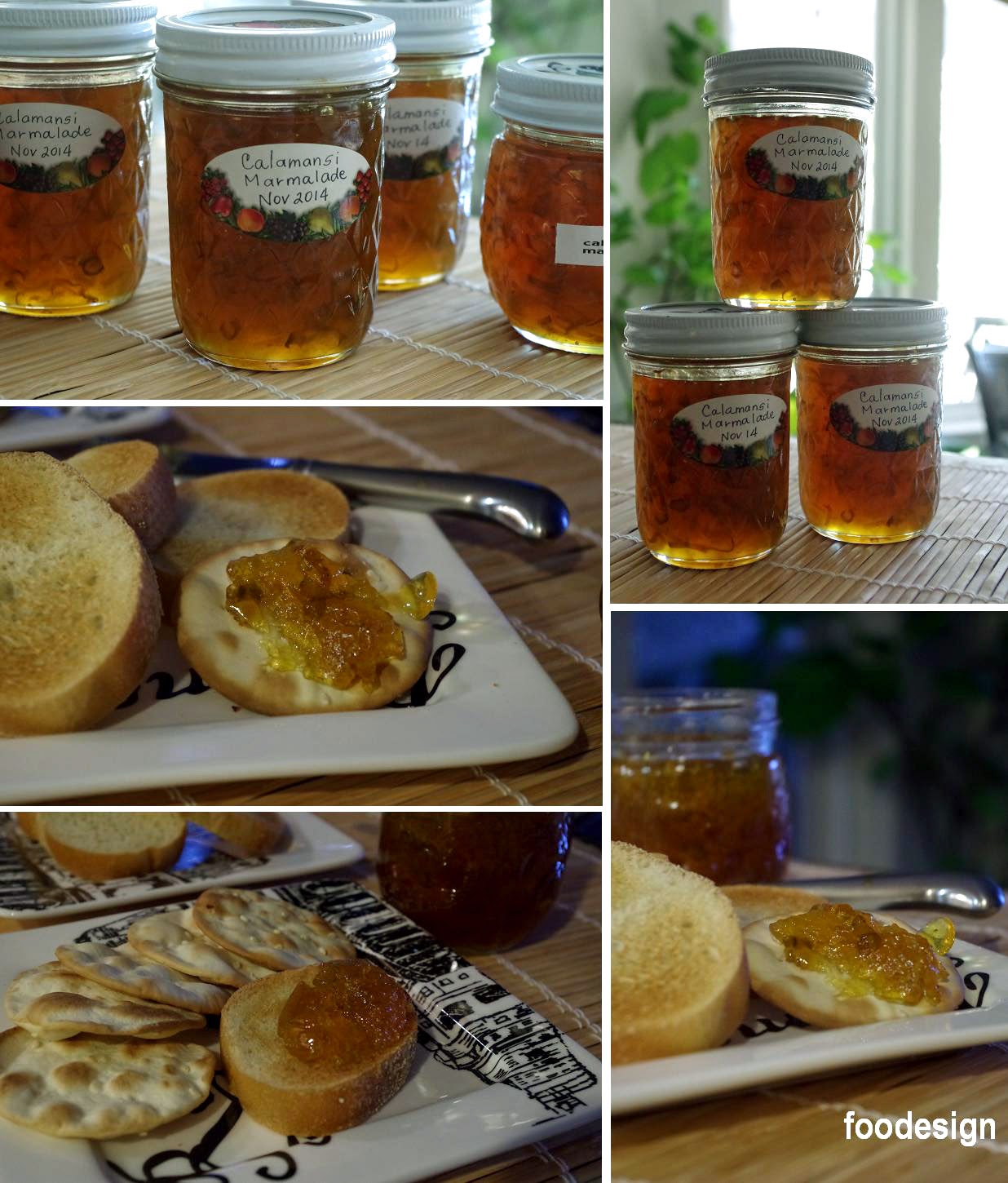The finished product taste test as shown above. The canning jars, lids and rings were washed thoroughly with warm soapy water then sterilized in boiling water for 10-15 minutes before using. I let them air dry on a wire rack while cooking the marmalade. Served with some crackers and toasted slices of French bread, the calamansi marmalade had a good balance of sweetness and citrus flavor with a slight bitterness from the strips of calamansi peel. The distinct calamansi flavor in this marmalade was unlike any other citrus marmalades I've tried.
 |
| washing the calamansi under running water |
Using a small knife, slice and juice the fruits removing the seeds (above). I separated the segments from the peel, however, this step is optional. Slice the peel into strips next. I later found out that it was better not to slice the peel too thinly as they almost melted while cooking. Add 3/4 cup of water to every cup of fruit. I simmered the juice with the peel and the pulp segments in two separate pots for 10-12 minutes. Then I strained the pulp into the juice to get maximum pectin. Refrigerate the mixture preferably overnight.
The next day, pour the refrigerated mixture into a bigger pot before adding the sugar. The bigger pot ensures that the mixture doesn't boil over during the cooking process. Add 1 cup of sugar to every cup of the mixture. A tablespoon of butter may be added to prevent foaming. I learned that a candy thermometer is most helpful to precisely determine the correct temperature (ideally 220F) for the marmalade to properly set. The calamansi fruits contained lots of pectin eliminating the need for Sure Jell, a dry pectin product used for jam and jelly making.
 |
| the jars all filled up with the hot mixture |
Hand tighten the lids and rings onto the jars then process them in boiling water bath for 10-12 minutes, as shown above. Using a jar lifter gadget, carefully transfer the hot jars to a towel-lined tray or cutting board. As the jars start cooling down, they will pop and seal. Jars that didn't seal properly must be refrigerated. Sealed jars may be stored in the pantry.
Homemade marmalades and jams make great gifts from the kitchen for the coming holiday season. Label them with the date they were made then wrap them in clear cellophane, as shown in the example above. Tie with a pretty ribbon or raffia.






Looks good! I wanna try this too. I plan on using just small 4oz jars though. Will the cooking time be the same? Thanks!
ReplyDeleteYes, about the same. The smaller size jars are perfect for giveaways too! Thanks Karen :-)
DeleteHi! i tried making calamansi marmalade yesterday and followed the first recipe I saw on-line. Sadly, it did not come out well, it tasted a bit bitter and when it cooled it was hard to spread. Im going to try your recipe. May I ask, when you say a cup of calamansi do you mean i put the whole calamansi in the cup before I slice it? I hope you can help me in this. Im glad I found your page. Hope to hear from you soon. Thank you.
ReplyDeleteI remember this wasn't too bitter but it all depends on the calamansi that you will use. I think I used mostly ripe ones. To make it more spreadable once it has cooled down or has been refrigerated, you may try to microwave the amount you will use for a few seconds. To answer your question, I believe it's 1 cup sliced. Sorry for not replying sooner - been absent from this blog for quite sometime now but hoping to get back soon :-) Hope you will like this calamansi marmalade version.
Delete